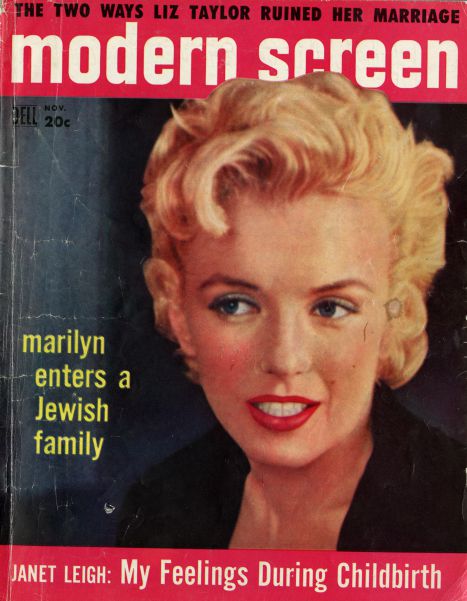
Becoming Jewish: Warhol’s Liz and Marilyn, the current exhibition at the Jewish Museum in New York, has been favourably reviewed by the Daily Beast‘s Emily Shire.
“The exhibition features soundless footage of Monroe as a glowing bride in a relatively informal white dress and short veil enjoying a small reception at the home of Miller’s agent, Kay Brown, in Katonah, New York, hours after that ceremony.
The exhibition is rather small, a single room that takes no more than 30 to 40 minutes to fully explore. But the space fosters a sense of intimacy, enhancing the deeply personal revelations about two of the most famous and photographed women in American history.
While the exhibition includes clips of Miller and Monroe arm-in-arm at press conferences and plenty of photos of them, it doesn’t capture the same sense of gushing affection that is so apparent between [Mike] Todd and Taylor.
Fewer markers of Monroe’s connection to Judaism are on display, though the ones present are quite special.
One that particular stands out is Monroe’s beautiful, simple musical menorah, which played the Israeli national anthem, ‘Hatikvah.’
There is less information or, for that matter, evidence of Monroe’s connection to Judaism after her marriage to Miller ended in 1961—though that may very well be a sad consequence of the little life she had left to live.
Nevertheless, according to letters from Rabbi Robert E. Goldburg, who oversaw Monroe’s conversion, the blond bombshell told him she had no intention of renouncing Judaism after the divorce.
She also, apparently, remained very close to Miller’s children and father until her passing.
Becoming Jewish features two detailed letters from Goldburg: one from September 7, 1962, barely a month after Monroe was found dead, and another from August 6, 1986. His descriptions of Monroe provide a new perspective on one of the most iconic and enduring celebrities.
Goldburg wrote about his first time meeting Monroe at her apartment on Sutton Place after Miller invited him and how he was ‘struck by her personal sweetness and charm.’
Unlike Taylor’s draw to Judaism, Monroe’s does not necessarily seem driven by a romantic-related desire.
Goldburg’s letters describe how Marilyn expressed her respect for Jewish individuals. Albert Einstein and his book of essays, Out of My Later Years, were especially significant to her.
Goldburg also wrote that she felt no connection to the ‘Fundamentalist’ Christianity she was raised with in her foster home. Instead, she was attracted to Judaism’s ‘concept of close family life.’
Perhaps most eerily poignant to those of us who have poured of the tragic details of Monroe’s short life—from her tattered childhood to her struggles to be taken seriously as an actress to her failure to conceive the children she so wanted—is Goldburg’s line that Monroe sought Judaism because she ‘often identified with the underdog.’
‘I have always felt that she was an extremely lovely person who was not able to overcome the terrible emotional burdens, which were a part of her childhood and which were aggravated by her tremendous fame,’ Goldburg wrote.”
